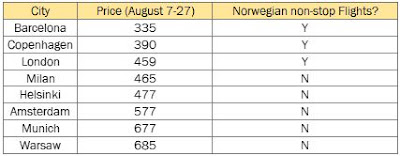First, with regards to crisis: this decade has had its share of catastrophes. I still vividly remember going to the UCLA campus (I was studying for a master's at the time) the morning after Donald Trump's election. The emotions that I then felt, a mixture of sadness, rage and grief-were more powerful than any I had ever experienced outside of a couple family tragedies. I nearly got into a scuffle with a pro-Trump heckler I encountered near the Math Science Building while partaking in an anti-Trump protest march during a break from class.
Protests on the UCLA Campus following Donald Trump's Election, November 10, 2016
I had avoided the news for a few years prior to the 2016 election. My involvement in heated campus political debates as an undergraduate student had left me with an aversion for partisan feuding, despite maintaining strong political beliefs. I went into urban planning partly because I (wrongly) thought it would be a way to implement progressive policies without having to fight political battles. However, the threatening nature of Donald Trump's candidacy combined with the even more unsettling feat of his election victory prompted me to renew my focus.
The balance between staying informed and keeping sane has been tough. I have long struggled with OCD and anxiety. Scanning through provocative online headlines in the first year following the election led to many restless and unproductive afternoons. I have gone so far as to delete Apple News from my phone but still read the Atlantic and New York Times on a weekly basis.
Still, despite my revived news interest, I don't feel a strong sense of personal impact from the events of the past decade. President Trump's racist, classist and isolationist policies and rhetoric have not (yet) personally affected me as a middle-class, straight, Eurasian male. The more volatile climate has led to more wildfire and flooding episodes here in southern California but I have an insulated home with modern, air-conditioning, heating and Netflix. Not being able to go outside for a few hours on a certain fall or winter day is a disappointment, not an inconvenience.
Smoke-filled Vista of West Hollywood during the Bel Air Fire, December 2017
I have always been thorough in my processing of information, preferring lengthy travel books and encyclopedias as a young reader to the "For Kids" summaries favored by my peers. For much of the last decade, I strived towards an academic/research career (first in history and then in urban planning), immersing myself ever more deeply into the thorny details of weighty theoretical questions.
Smartphones
While much of the world moved from traditional news journalism to Buzzfeed, I progressed from occasionally reading the New Yorker to regularly reading articles in the Journal of the American Planning Association. While I sought out the life of the mind, others lived the life of the meme.
This is not to say that I never multi-task or superficially scan social media. When typing a piece on my computer (as I'm doing now), it can be incredibly difficult for me not to open another window in order to scan headlines in the New York Times or London Review of Books. However, I cannot pretend-as most can-that such switches of attention are productive or even momentary. One scan of the page leads me to read one article, click on three links and so on. It is the idea of the millennial as a net-savvy multi-tasker that excludes me.
At the other extreme, the anxiety created by digital multi-tasking and global tumult has made "mindfulness" meditation increasingly popular. "Mindfulness" sessions aim to reduce anxiety by drawing participants' attention to the present moment, through techniques such as deep breathing and listening to statements of self-affirmation.
As someone who periodically participates in mindfulness meditation, I believe it has many therapeutic benefits. Meditation helps me acknowledge the subjectivity of my thoughts and emotions in stressful situations.
And yet, many mindfulness videos and programs I have encountered espouse foolishly optimistic attitudes towards the world and life. For instance, morning meditations I have listened to on Youtube repeat phrases1 like "Today is going to be a great day" or express gratitude2 for such modern "miracles" as "the electric light," "stoves," and "automobiles." The former statement seems out of touch with a society in which many people struggle to pay education or medical bills. The latter papers over the fact that many modern conveniences also contribute to climate change.
Much of the past decade's pop culture mindfulness, which implicitly demands a retreat from the public sphere, amounts to nothing more than escapism. Like boozy brunches and Netflix binges, mass meditation has served only as a momentary distraction from a world on the brink.
For much of the 2010s, I have felt isolated in a world that teeters between chaos and distraction. This isolation has been compounded by my social anxiety and awkwardness. In the last few months, the future has begun to look more promising. I have come to terms with some of my inner demons and began to accept my unique personality.
The next decade will likely be even more tumultuous. Climate change will accelerate. Trump won't go down without a fight, with social media being a prime battleground.
Therefore, I feel compelled to take a stand in the 2020s rather than sitting it out. My recent personal crisis has inspired me to express my ideas and opinions. To provide a digital outlet for deep thinking on an array of topics, communicated in terms anyone can understand.
My first big project for 2020 will be to upgrade and expand this blog (more details coming soon). Its hard to project what will happen afterward. I look forward to the journey.
1. See Today is a Great Day-10 Minute Guided Morning Meditation. https://www.youtube.com/watch?v=nhMinG8RNek
2. See Louise Hay's Morning Meditation. https://www.youtube.com/watch?v=4jNV1FV-_Os&t=9s























